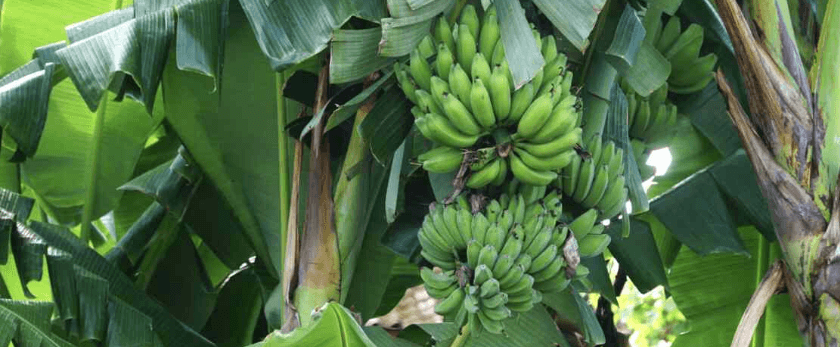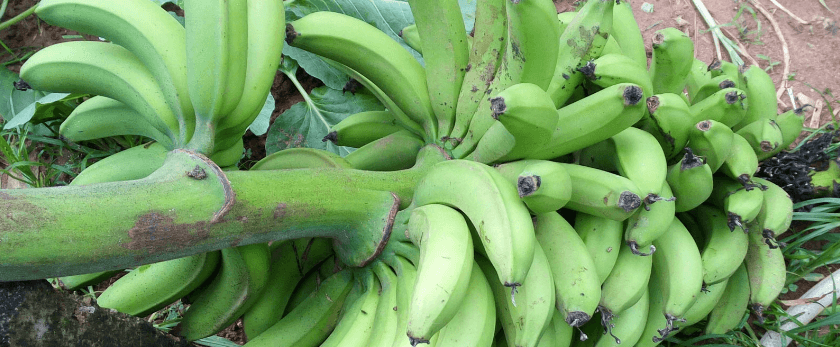Plantains are a versatile and nutritious fruit that can be grown in your own backyard. Not only are they delicious, but they also have numerous health benefits and are a sustainable food source. In this article, we will discuss how to grow plantains and provide tips for caring for them.
What are Plantains?
Plantains are a type of banana that is larger and starchier than the common banana. They are a staple food in many tropical regions and are often used in cooking. Plantains are rich in vitamins A and C, as well as potassium and fiber. They are also low in fat and cholesterol, making them a healthy addition to any diet.
Choosing the Right Time to Grow Plantains
Plantains are typically grown in tropical and subtropical regions, but they can also be grown in other areas with the right conditions. The best time to grow plantains is during the warm and humid months of the year. They require a temperature range of 75-85°F and cannot tolerate frost or freezing temperatures.
How to Care for Plantains
Watering
Plantains require consistent moisture to thrive. They should be watered deeply once or twice a week, depending on the weather and soil conditions. The soil should be kept evenly moist, but not waterlogged. Overwatering can lead to root rot, so it is important to monitor the soil moisture levels.
Light
Plantains require full sun to grow and produce fruit. They should be planted in an area that receives at least 6-8 hours of sunlight per day. If you live in a cooler climate, you can grow plantains in a greenhouse or in a sunny spot indoors.
Soil
Plantains prefer well-draining, fertile soil with a pH level of 5.5-6.5. They do not do well in heavy clay soils, so it is important to amend the soil with organic matter, such as compost, to improve drainage and provide nutrients. Plantains also require good aeration, so avoid compacted soils.
Fertilizer
Plantains are heavy feeders and require regular fertilization to produce healthy fruit. A balanced fertilizer with equal amounts of nitrogen, phosphorus, and potassium is recommended. Fertilize every 2-3 months during the growing season, following the instructions on the fertilizer package.
Pruning
Pruning is an important part of caring for plantains. It helps to promote healthy growth and increase fruit production. Prune off any dead or damaged leaves and remove any suckers (small shoots that grow from the base of the plant) to allow the main stem to focus its energy on producing fruit.

Common Problems with Plantains
Pests
Plantains are susceptible to pests such as aphids, mealybugs, and mites. Regularly inspect your plants for signs of infestation, such as yellowing leaves or sticky residue. If you notice any pests, you can use an organic insecticidal soap or neem oil to control them.
Diseases
Plantains can also be affected by diseases such as fungal leaf spot and Panama disease. To prevent these diseases, avoid overwatering and provide good air circulation around the plants. If you notice any signs of disease, remove and destroy the affected leaves or plants to prevent it from spreading.
Nutrient Deficiencies
Plantains require a balanced supply of nutrients to grow and produce fruit. If you notice yellowing leaves or stunted growth, it may be a sign of nutrient deficiency. A soil test can help determine which nutrients are lacking, and you can amend the soil accordingly.
Responsible Disposal Methods
When it comes to growing plantains, it is important to also consider responsible disposal methods. Plantains are a sustainable food source, but they can also produce a lot of waste, such as peels and leaves. Here are some eco-friendly ways to dispose of plantain waste:
- Composting: Plantain peels and leaves can be added to a compost pile to create nutrient-rich soil for your garden.
- Animal feed: Plantain peels and leaves can also be fed to livestock, such as pigs and chickens, as a nutritious supplement to their diet.
- Natural dye: Plantain peels can be boiled to create a natural dye for fabrics and paper.
- Biodegradable packaging: Plantain leaves can be used as a biodegradable alternative to plastic packaging.
By using these methods, we can reduce waste and promote a more sustainable future.
Conclusion
Growing plantains can be a rewarding experience, both for your taste buds and for the environment. By following these tips for caring for plantains, you can enjoy a bountiful harvest of this nutritious fruit. Remember to also consider responsible disposal methods to minimize waste and contribute to a greener, more eco-friendly lifestyle. Happy growing!










